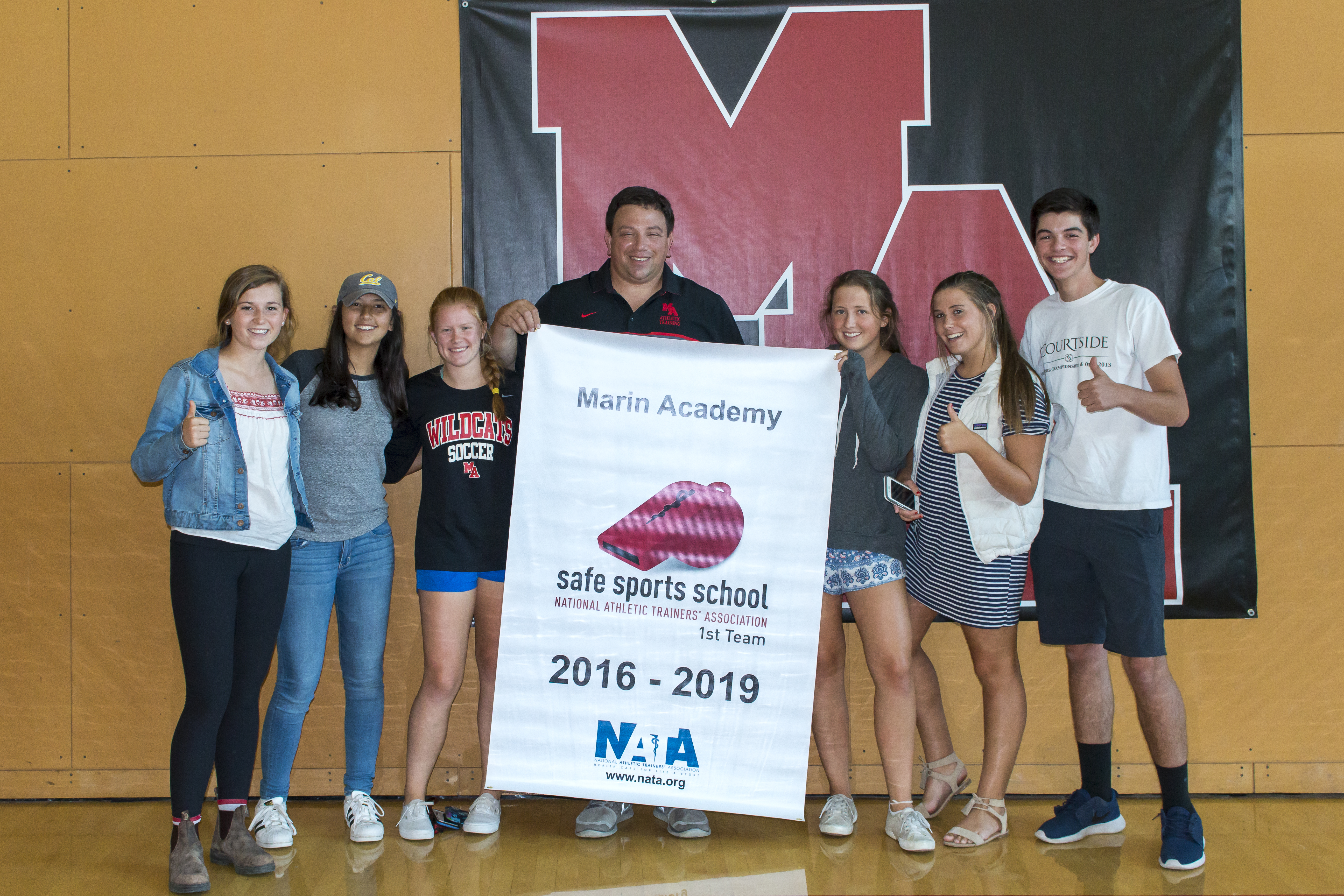
Volain’s View: Preventing pain with athletic trainers
It was only a few days into my high school career when I realized that the padded walls in the gymnasium were not only that; one section opened into a fluorescent-lighted room with a desk and a padded table, with muffled sounds of conversation, laughter and the unmistakable sound of tape being torn starting up shortly after the final school bell rang.
I’d found the athletic trainer’s office. While I didn’t need any help before soccer practice that day, I would eventually find myself a regular visitor, establishing a relationship not just with athletic tape and bags of ice, but also with the athletic trainer who helped manage the discomfort associated with my patellar tendinitis.
I was reminded of that relationship this month, as March is National Athletic Trainer Month. This year, the campaign’s theme is, “Your protection is our priority.”
“We do what we can to promote who we are and what we do,” said Aaron Gill, Marin Academy’s athletic trainer. “Athletic trainers are health care providers that have skills to evaluate injuries and illness associated with athletics. We manage, refer, treat and help those athletes return to their sport.”
While a big part of athletic training, at any level, is dealing with injuries that have already occurred, athletic trainers also work to strengthen the problematic muscle groups so another injury doesn’t occur.
“At the high school level, injuries occur because the development of strength and ability to withstand the forces (of the sport) is a large discrepancy,” San Rafael’s athletic trainer, Shana McKeever said. “We work on strengthening the muscles as well as synchronicity of the muscles working on the joints. We try to teach them practices that will keep them involved with their sport as much as is safe for them.”
As a sports fan, I constantly hear about professional athletes who are playing through injuries, not reporting injuries and the like. While the macho ideals of sports often influence athletes to play through pain, doing so can be detrimental. As a result, athletic trainers — especially those on campus full-time like Gill — have placed emphasis on developing good lines of communication with the athletes. If a good relationship has been forged, athletes are more likely to disclose that they’re dealing with pain.
“Something I didn’t realize I’d enjoy so much before coming (to the high school level) is trying to create an environment, trying to create a fine line between being serious (about injuries) and being a place they can feel comfortable and crack jokes,” Gill said. “There may be three kids who come in, with two of them (just accompanying) the injured one. Now we have that built-in relationship, at least that one interaction, so they can feel comfortable.”
In Marin County, there are now athletic trainers at almost every school, something which was far from the case as recently as four years ago.
The growth of athletic trainers at high schools in the area prompted McKeever to start organizing monthly meetings with her peers. Communication with the athletes is important, but she said trading strategies can be quite beneficial, too.
“Without mentioning (student athletes) by name, we’ll swap stories with situations we’ve had. We’ll bounce ideas off of each other for how to deal with that situation. We talk about current trends and topics within our profession, help each other develop a more well-rounded understanding,” McKeever said. “We all come from different backgrounds, both in where we got our athletic training certification, and the opportunities that we’ve had along the way.”
While most schools in the area employ at least one athletic trainer now, Gill said having multiples would create more opportunities to keep the athletes on their chosen playing field.
“One of the things I wish I had more time and hands to do, is that there’s a lot of research out there,” Gill said. “When we do specific exercises to strengthen, we can decrease injuries.”
After suffering an injury that saw my knee cap grinding into my knee, I needed the help of an athletic trainer to help develop the muscles around it. After some physical therapy, I worked with an athletic trainer for an entire track season to keep up my strengthening exercises. Exercises and stretches are often a small addition to an athlete’s routine that can have a large impact on their health.
“A few years ago, I looked at injury trends in cross country. The principles of an ACL injury prevention program are warm-ups that activate the muscles,” Gill said. “I came up with a set of exercises that can be done in 10 minutes. It addresses feet, ankles, calves and hips that they can do before they start warming up to actually run.
“It has helped. The coaches (agree) that it hasn’t gotten rid of every (issue), but has decreased the duration — how long the pain was bothering them — as well as the intensity.”
High school is a transformative time, both mentally and physically, and staying healthy is a key to athletic success. With the help of a strong line of communication with an athletic trainer, staying healthy is a little easier.
“The variety of kids and personalities, the ability to develop relationships with coaches and students and see them grow from young adults into true adults, there’s a lot of change there,” Gill said. “Having equipment and resources from the school and a plan in place keeps everyone calmer.”
Written by Mark C. Volain | Marin Independent Journal | Click here for story
Mark C. Volain is the sports editor at the Marin Independent Journal. You can contact him with story ideas, corrections, issues or compliments at mvolain@marinij.com or by calling 415-382-7298. You can as follow Mark C. on Twitter: @MarkCVolain.



Comments are closed